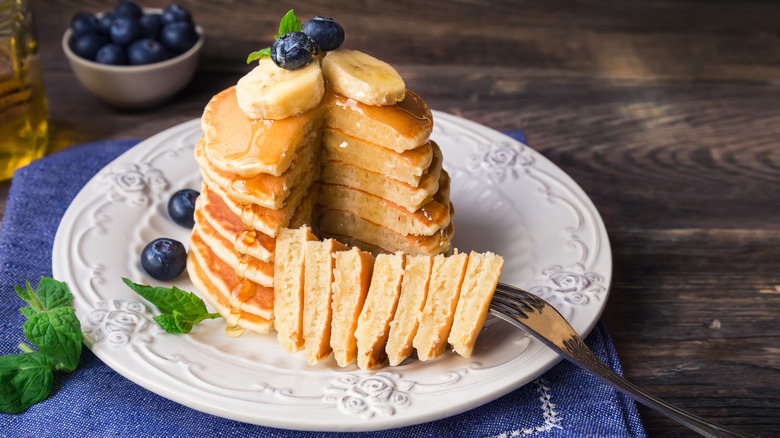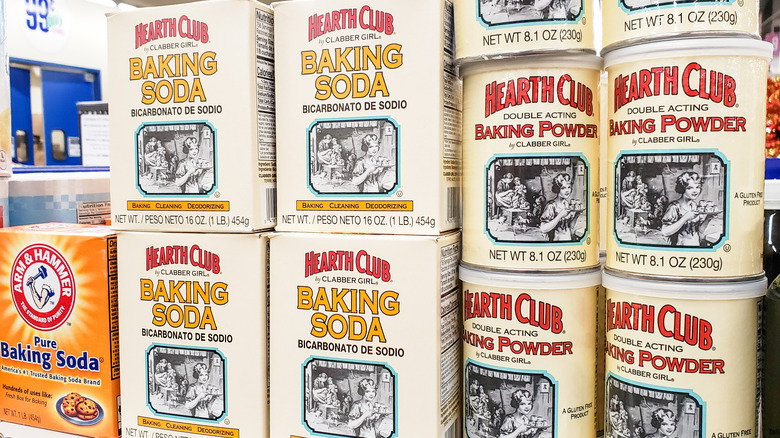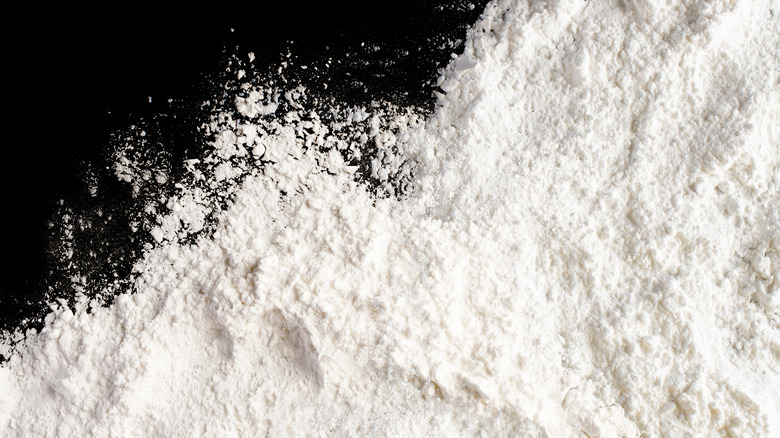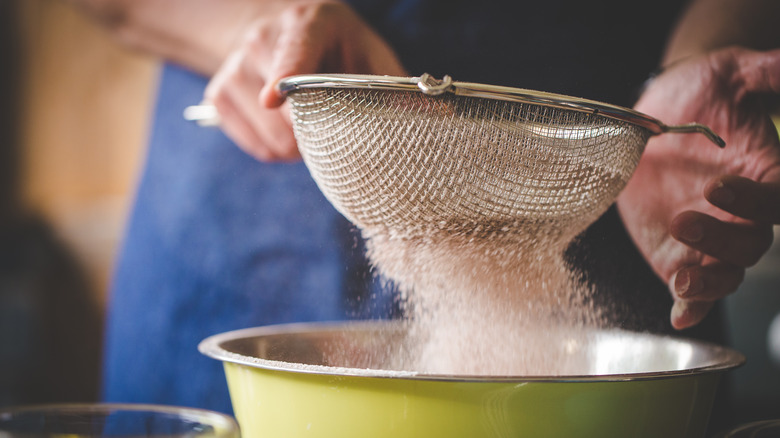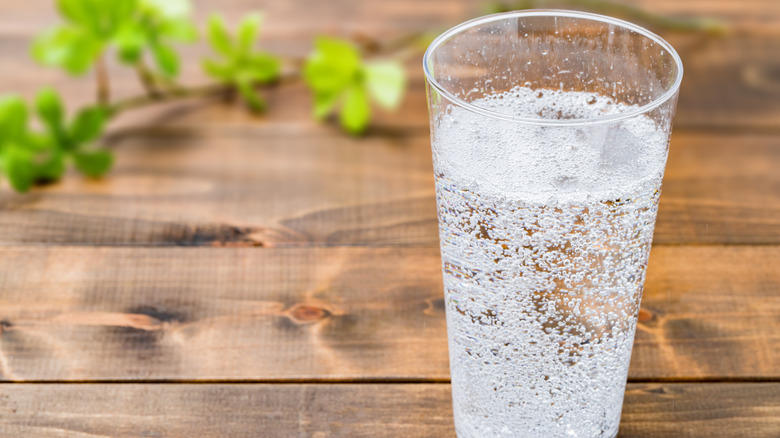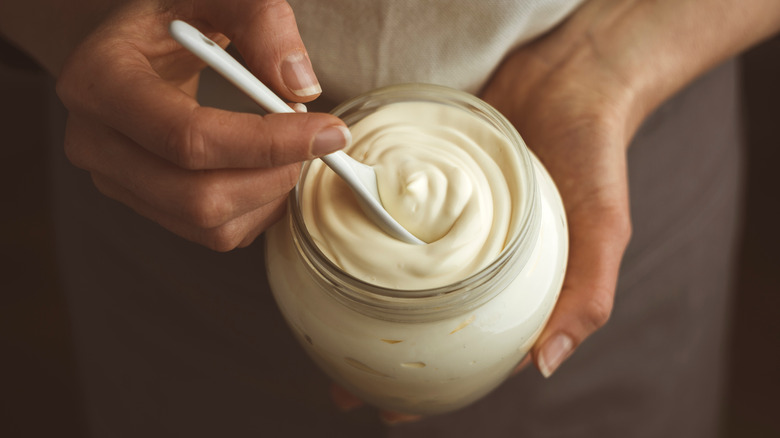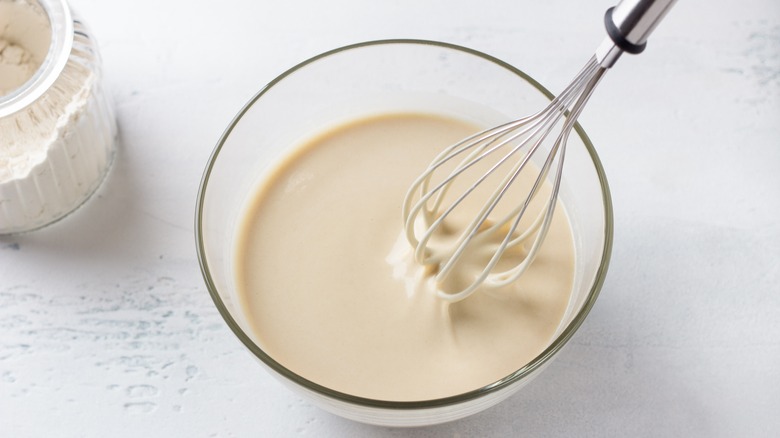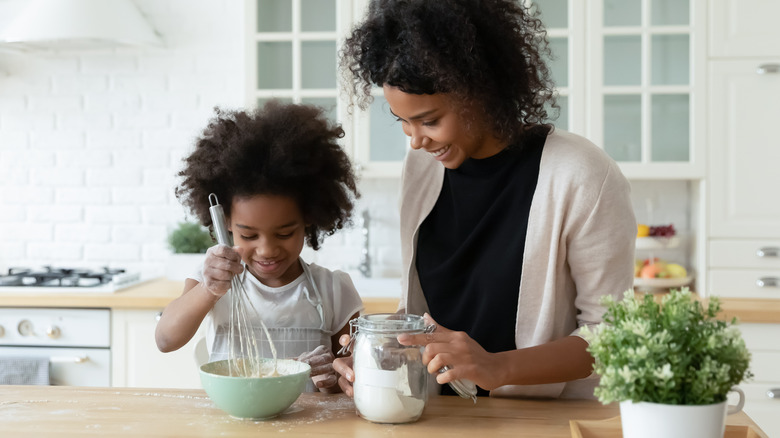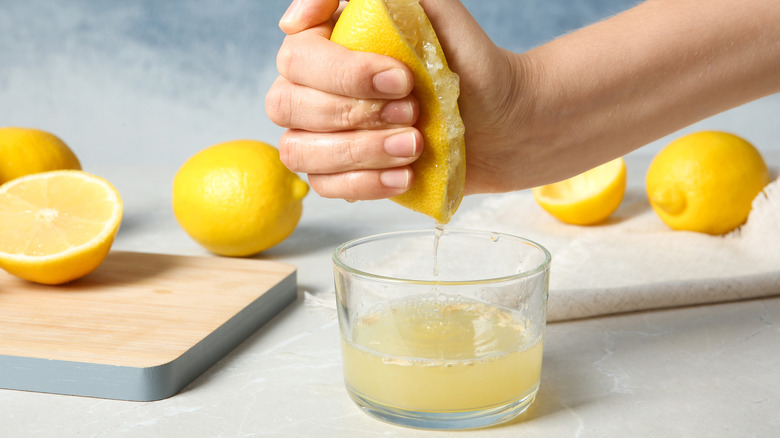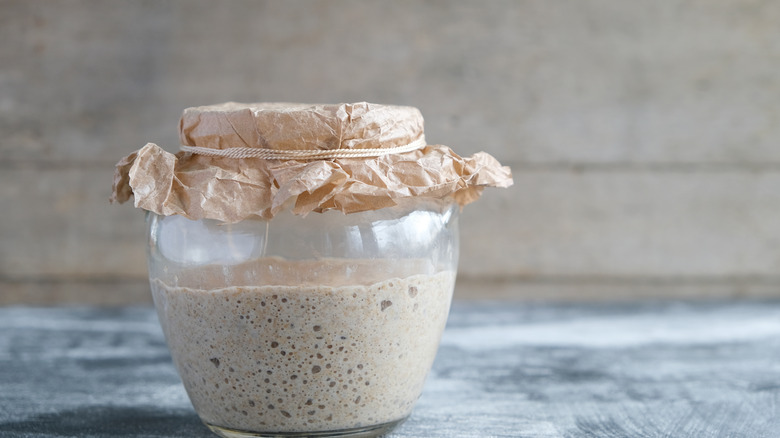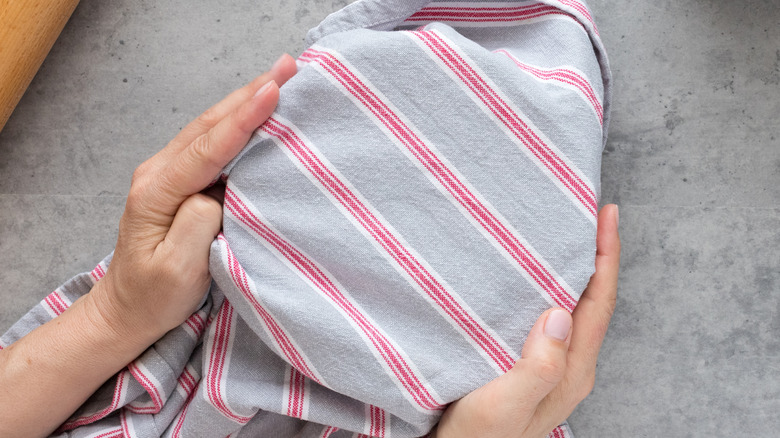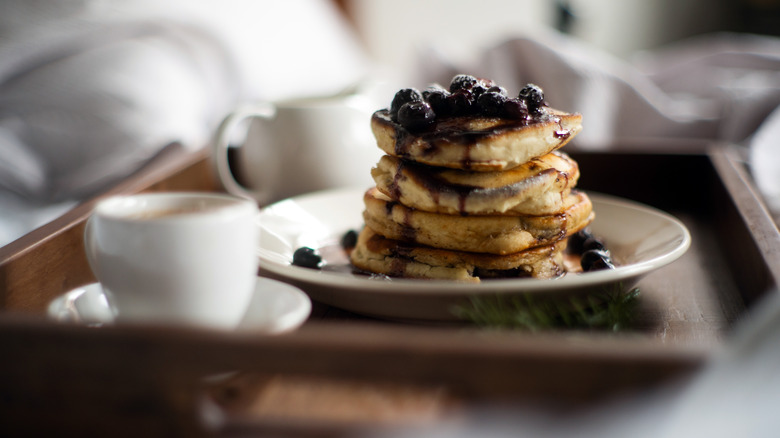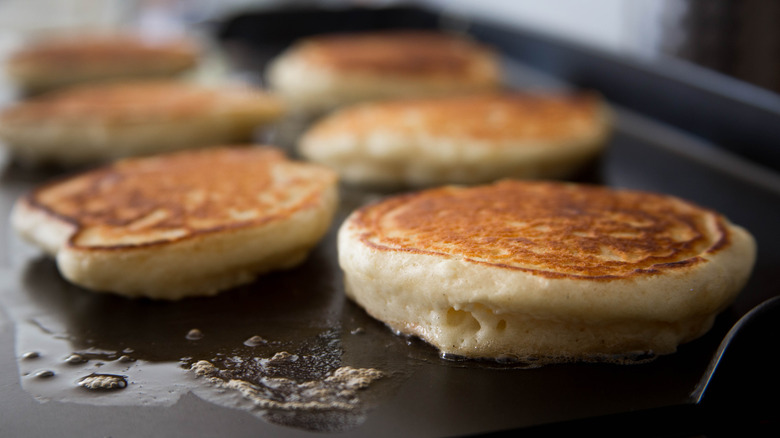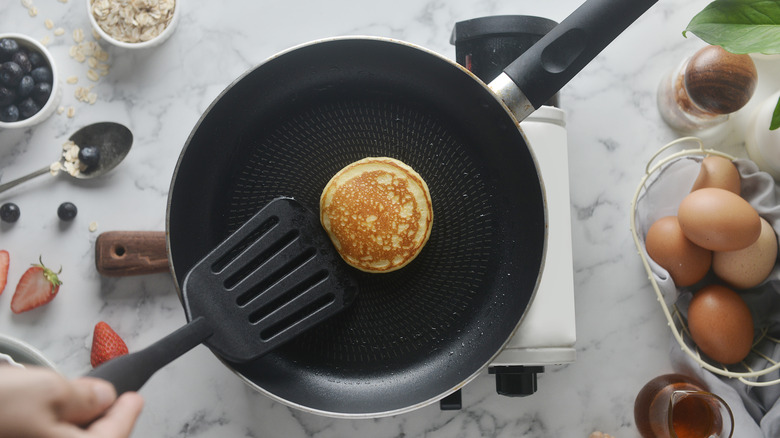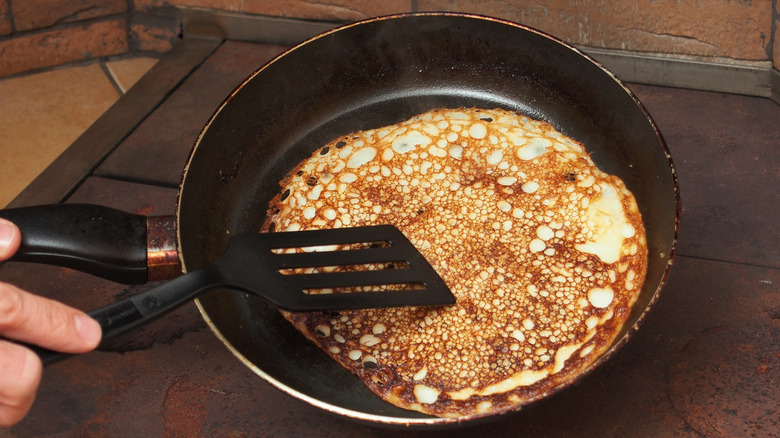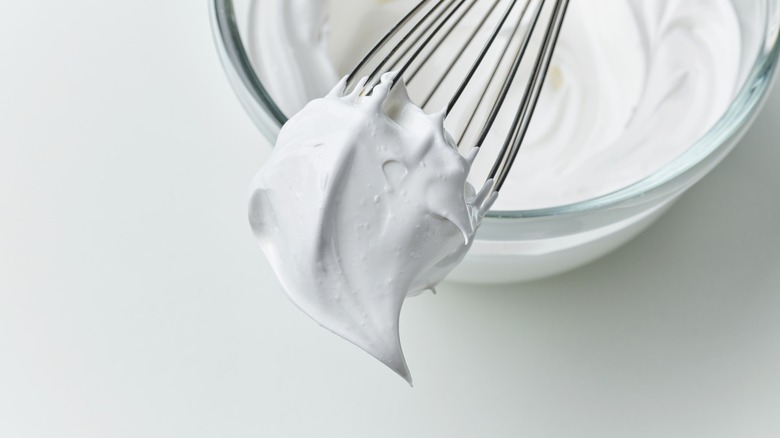15 Tricks For Making The Most Fluffy Pancakes
We may receive a commission on purchases made from links.
Is there anything better than digging into a plate of fluffy pancakes on a relaxing Sunday morning? Pancakes are fantastic because you can top them with an array of delicious ingredients like banana slices, chocolate chips, nuts, whipped cream, and more. It is always such an appeasing moment when you're sitting at a diner, and you're given a towering stack of flapjacks with a butter chip on top melting before your eyes. Pour a drizzle of maple syrup on them, and you're ready to dig in.
Of course, you can always make pancakes on your own, but how will you achieve the same level of fluffiness at home? It's not uncommon to make mistakes that ultimately cost the texture of your pancake. Luckily, there are several tricks at your disposal to help you out. By following these simple tips and practices, you will be well on your way to making praise-worthy pancakes that are sure to get your day off to a terrific start.
Use a fresh leavening agent
Did you know that leavening agents lose their effectiveness over time? With that in mind, a leavening agent on the older side could be why your pancakes aren't fluffy. Since these products ultimately play a significant part in how the pancake lifts when it cooks, this is important to recognize. Using a leavening agent you've bought within the last six months will achieve the best results. I
f baking soda or powder has been stocked in your pantry for a bit longer, you can always run an easy experiment to see if it can still make your pancakes rise. The most efficient way to do so is to grab some hot water and sprinkle some of the baking powder into it. If the mixture bubbles and turns foamy, you're likely good to go. You can use this same method with baking soda, except you will need to add something acidic into the water, like vinegar.
Instead of all-purpose flour, use cake flour
If you want to take your flapjacks to the next level, you should consider making them with cake flour rather than all-purpose (AP) flour. All-purpose flour can indeed be used in almost any recipe that requires flour, hence its name. However, once you learn the real difference between bread, cake, self-rising, and all-purpose flour, you might never go back to using AP flour in your pancakes again. Since cake flour has such a powdery and light texture, it is known for making the fluffiest cakes and other baked goods.
In addition, it makes it much easier for the pancakes to rise when the dry ingredients in your batter are lightweight. Even Ree Drummond, also known as The Pioneer Woman, uses cake flour in her pancakes, so this trick must be worth putting into practice. After all, each type of flour has its purpose, so why not take advantage of that by allowing cake flour to do what it's best at?
Sift the dry ingredients
When making particular cakes and types of bread that are supposed to be fluffy, it is a clever practice to sift your dry ingredients, and this notion remains for making flapjacks too. Although it may seem like a step you can easily skip without repercussions, this isn't necessarily true. If you don't sift the flour and other dry ingredients beforehand, it can produce a batter that is too heavy.
During the cooking process, the heaviness will cause the pancake to be weighed down and not properly rise, which is the real reason why not sifting flour can ruin your recipe. Understandably, not everyone has a sieve or sifter in their cupboard waiting to be used. Lucky for you, it's quite easy to learn how to sift flour if you don't have a sieve. To do so, simply break out a whisk and use it to sift the dry ingredients. Doing this will also ensure that your leavening agents, like baking soda or baking powder, will get equally dispersed throughout the mixture. So go ahead, try giving your whisk or sieve a go, and see for yourself how big of a difference it makes.
Add carbonated water
The next time you prepare pancakes, get your Soda Stream ready. The carbonation from seltzer (or soda water) creates air bubbles, ensuring your flapjacks are airier and lighter. If you want to know the secret to fluffy pancakes, simply skip out on the liquid that the pancake recipe calls for and use seltzer water instead. The best part is that this trick works for making pancakes from scratch and is also one of the best ways to upgrade boxed pancake mix.
If you don't have seltzer water on hand, don't worry. You can always use another carbonated drink like 7UP or Sprite. Although it might seem a bit odd, using flavored soda won't drastically change the flavor of the pancakes. It is also a fantastic choice for those who have vegan diets and can't incorporate buttermilk or eggs into their batter. Seltzer water will surely save the day by providing pillowy pancakes.
Incorporate mayonnaise into the batter
Although you might be asking yourself why you would put mayonnaise in your pancake batter, it is undoubtedly worth it because of its end result (and no, you won't be able to taste it). This surprising ingredient will help you get fluffier pancakes for several reasons. The first is that the acid in the mayonnaise activates the baking soda that's in your batter. Baking soda ultimately makes the pancake rise, so giving it a boost will help to ensure an even fluffier finish. Additionally, mayonnaise has egg whites, yolks, and oil, which contain fat that will prevent the pancake from being weighed down by a heavy batter.
The good news is that it doesn't require much mayonnaise to get the job done. Make your batter as you usually would, then put a couple of dollops of mayonnaise into it, gently folding it to combine. Then watch as the pancakes cook and the mayonnaise works its magic. You will be delighted at how impressive this trick is.
Mix with a balloon whisk
So, let's say you plan to mix your batter by hand; you might wonder what the best tool to use is. Without a doubt, the best option is a balloon whisk. This is because those types of whisks are specially designed to incorporate air into the food you are mixing. As the product name suggests, the shape of this whisk is balloon-like; it is rounder than other whisks on the market. Since it will help the batter to become airier, this will, in turn, aid the pancake in lifting as it cooks.
Of course, you can always use an electric mixer to mix the batter, but then you run the risk of overmixing it. So, it is a safer course of action to mix by hand using a balloon whisk. Lucky for you, balloon whisks are inexpensive and not hard to come by (Amazon offers plenty of great options), so getting your hands on one shouldn't be difficult.
Don't overmix the batter
A frequent error people make when making pancake batter is mixing it for too long (via King Arthur Baking Company). It is only natural to want to break up all the lumps in the mixture. However, minor lumps are not anything to worry about when it comes to pancakes. The bigger worry here should be about the gluten in the flour because overworking it can be detrimental to your pancakes and their texture. Flour is a fragile ingredient in this context. While allowing the gluten to develop is preferred for baking sturdier types of pastries, this is something you want to avoid with pancakes.
The key is to stop mixing the batter once you have incorporated the wet and dry ingredients — every single hit with the whisk from there on out risks the over-development of the gluten. In turn, this practice would give you the exact opposite of fluffy flapjack. Nobody wants to eat tough pancakes, so try to be cautious of stirring for too long and collapsing the air pockets in the batter.
If using baking powder, add a bit of lemon juice
Here is a clever trick that you can use to add even more power to your leavening agents. Betty Crocker suggests combining baking powder and lemon juice makes your pancakes more cloud-like. This method is similar to adding mayonnaise because a small addition of acid will react with the leavening agent, furthering its power. You can squeeze a lemon or use store-bought lemon juice; either will work fine. Since only a tiny amount is needed, it will not alter the overall consistency of the batter, so don't worry that it will thin the mixture out.
Incorporating a squeeze of the tart citrus into the batter is great for people who don't have mayonnaise on hand or maybe others who are vegan and want to avoid animal products. Whatever the reason, you can be confident that adding a tablespoon or two of lemon juice will give you the tender and tasty pancakes you deserve.
Use a sourdough starter
Sourdough starter can come to the rescue if you find yourself without baking powder or soda. The starter contains natural yeast, which plays a part in how bread rises. In baking, you can swap sourdough starter or yeast for leavening agents in a pinch and vice versa (via Healthline). The important thing to remember is that sourdough starter already contains flour and water, so you will have to slightly adjust the ratio of those ingredients in your recipe to account for the starter. Luckily, it isn't tricky to do since the proportions of wet and dry ingredients in the starter are even.
King Arthur Baking Company suggests keeping at least ⅔ of the flour that the recipe originally calls for and substituting the rest with the sourdough starter. If you want to be safe, you could start with a smaller amount and do a test run to guarantee that the pancake rises and tastes pleasant. Adding too much starter could make the pancake taste bitter, so start with just a bit and adjust from there.
Allow the batter to rest
Although it may be tempting to rid your pancake batter of every lump, that isn't necessarily the best way to go about it. Not only is it okay to leave lumps in your pancake batter, but it's also encouraged. A completely smooth batter would run thin as soon as it hit the hot pan. In other words, the lumps help the pancake keep shape, which is excellent because a thin pancake won't rise much at all.
The most important practice you can do with a slightly lumpy batter is to let it rest before pouring the pancakes. This practice will give time for the lumps to moisten so that there aren't dry bits in the final product. Patience is critical here, and you will be pleasantly surprised if you wait a few minutes so that the batter has time to reach its full potential. In fact, letting the mixture rest also allows the gluten to ease up, which will also help create soft pancakes.
Sprinkle mix-ins onto the pancake rather than mixing them in
Undoubtedly, adding fun ingredients to pancakes can elevate their flavor and bring in texture contrasts that you wouldn't have with a plain batter. However, when adding mix-ins to the batter, it's crucial not to overdo it. Like unsifted flour, adding too many additional ingredients can add heaviness to the batter, which will inevitably make the pancake flat. So, whether it's chocolate chips, berries, or nuts, your best bet is to avoid incorporating them straight into the mixture. This trick creates more tender pancakes and can save your mix-ins from sinking to the underside; instead, you will have more control over where the mix-ins end up in the pancake.
To do so, wait until you've already poured the pancake batter, then sprinkle on whichever ingredients you prefer. From there, you can lightly press the chips or berries down with your finger so that they don't protrude too much when the pancake is flipped and cooked on the second side.
Break out the griddle
Using a griddle is a good move if you are serious about stepping up your pancake game. Griddles work better than other pans because they have a larger surface area, which helps in a few ways. First, it makes it easy to handle the pancake and flip them without worrying about the sides of a pan getting in the way. Additionally, since it is a flat working surface, the heat is uniformly spread out, and the pancakes cook more evenly. This gives the flapjack a perfect surface to rise.
If you frequently make pancakes, consider investing in an electric griddle. That way you can control the temperature to the exact degree you want, which you can't necessarily do by using a good old-fashioned burner. For example, you can set the appliance to a perfect 375 F when adjusting the heat levels, which is the ideal temperature to create cloud-like pancakes, according to Uno Casa. And let's not forget, you can always use the griddle for cooking other foods too, so it's a win-win, no doubt.
Flip the pancakes gently
Here is a simple technique that could ultimately save your pancakes from deflating: flipping them gently. This method might take some practice and focus at first, but once you have it down, you'll be thankful you learned it. Whether you sifted your ingredients or added special ingredients like seltzer water to make your pancakes light, you won't want all of that to go to waste because of how it's flipped.
Once the pancake edges brown and the bubbles on top have begun to pop, that is the perfect time to make your move. Carefully loosen the edges of the pancake and slip the spatula under; then, as softly as you can, place the raw side on the pan. Although it is tempting to flip flapjacks with a bit of pizzazz, you will be thankful you learned that it's not necessarily the best way to go about it.
Don't press the pancakes down with a spatula
No matter what you do to your pancake batter to make it airy, all of that effort can soon be destroyed if you're not careful when cooking it. It is crucial to keep in mind that you should never press down on cooking pancakes. This is because it will smash the air bubbles in the batter, creating a pancake that will end up flat. The tiny bubbles are also a fundamental signal in determining when to flip the pancakes, so they have more than one purpose. Rather than using your spatula to press on the pancakes, resist the urge to touch them while they're cooking.
Giving time for the air pockets to pop and the pancake to lift is the best thing you can do for them. Once you have flipped the pancakes, leave them to cook without further agitation. It is safe to say that pressing the pancakes with the spatula is a habit that has no benefit; it does more harm than good.
Whip the egg whites separately
One of the methods that will ensure you end up with dreamy pancakes is to separate the egg whites and whip them before gently integrating them into the batter. If the recipe you're using already calls for eggs, then simply separate the yolks and whites. You can even add in an extra white or two to create exceptionally light pancakes. Grab a whisk or use an electric mixer to whip the whites until stiff peaks form. Have no fear if you're unsure how to beat egg whites to stiff peaks: just keep an eye out for them to become thick and glossy. Next, lift your whisk out of the whites, and a peak should be on the end of the whisk. If the peak holds shape rather than drooping, you have reached the right consistency.
Ultimately, if you use this trick for fluffier pancakes, you will not be disappointed in the slightest. Yes, leavening agents work well, but whipped egg whites move mountains when it comes to making a tender and pillowy pancake.
